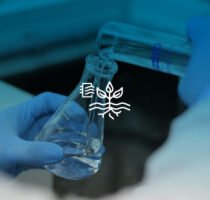The safety of various materials depends on their combustion time, how long it takes to extinguish the flame without intervention, or whether there is continuous combustion. The tests that evaluate these variables are called flammability and heat resistance tests. In addition to the standards for this type of test, the SCiTec laboratory also develops specific tests according to the customer’s needs.
Glow-wire test
The glow-wire test assesses the risks of fire, i.e. simulates the effects of thermal oscillations that can be produced by heat sources. Just to exemplify, overburdened incandescent elements and resistors are potential flame initiators.
Testing heat resistance on insulating parts is essential to minimize the risk of fire, especially in electronic equipment —which is more easily exposed to thermal stress due to electrical effects and deterioration.
Needle flame test
As its name suggests, the needle flame assay simulates the effect of small flames to assess the risk to fire. Electronic equipment, its subassemblies and components, solid electrical document ifhes and other combustible materials are susceptible to fault conditions that can generate flame.
The equipment determines the effects on the test sample of a small flame from other inflamed components.
Ball pressure test
This type of test is used to determine dimensional stability under high voltages and temperatures. In it, a 5mm sphere is pressed onto the material under analysis for a certain time, at a specific temperature. Then the diameter of the caused print is measured.
Thus, the test analyzes the relationship between the degree of deformation and temperature. Generally, electrical enclosures and external parts made of isolating materials are tested by means of the ball pressure test.








